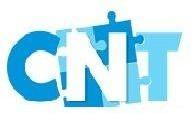
Introduction
Ketamine treatment is a powerful tool in treating depression, anxiety, and chronic pain. This presentation will cover best practices for administration and patient management to optimize treatment outcomes.



Ketamine treatment is a powerful tool in treating depression, anxiety, and chronic pain. This presentation will cover best practices for administration and patient management to optimize treatment outcomes.

Ketamine is an NMDA receptor antagonist that has been shown to have rapid-acting antidepressant effects. It can be administered via intravenous, intramuscular, sublingual, or intranasal routes. It is important to monitor patients for adverse effects during and after treatment.

Patient selection is critical for successful ketamine treatment. Patients should have a diagnosis of depression, anxiety, or chronic pain and have failed previous treatments. They should also be medically stable and not have a history of addiction or psychosis.

n Ketamine dosing should be individualized based on the patient's weight, medical history, and treatment goals. Monitoring vitals during treatment is important to ensure safety. Administration should be done in a controlled environment with trained medical personnel.

Patient management is critical for successful ketamine treatment. Patients should be monitored for adverse effects and receive psychological support before, during, and after treatment. Follow-up appointments should be scheduled to monitor treatment response and adjust dosage as necessary.

Ketamine treatment is a promising option for patients with depression, anxiety, and chronic pain. Optimal administration and patient management can maximize treatment outcomes.
It is important to continue researching and improving ketamine treatment protocols.
+1.732.484.9661
https://recoverycnt.com/ketaminewithdrawal-and-treatment-clinicin- new-jersey//
Do you have any questions?